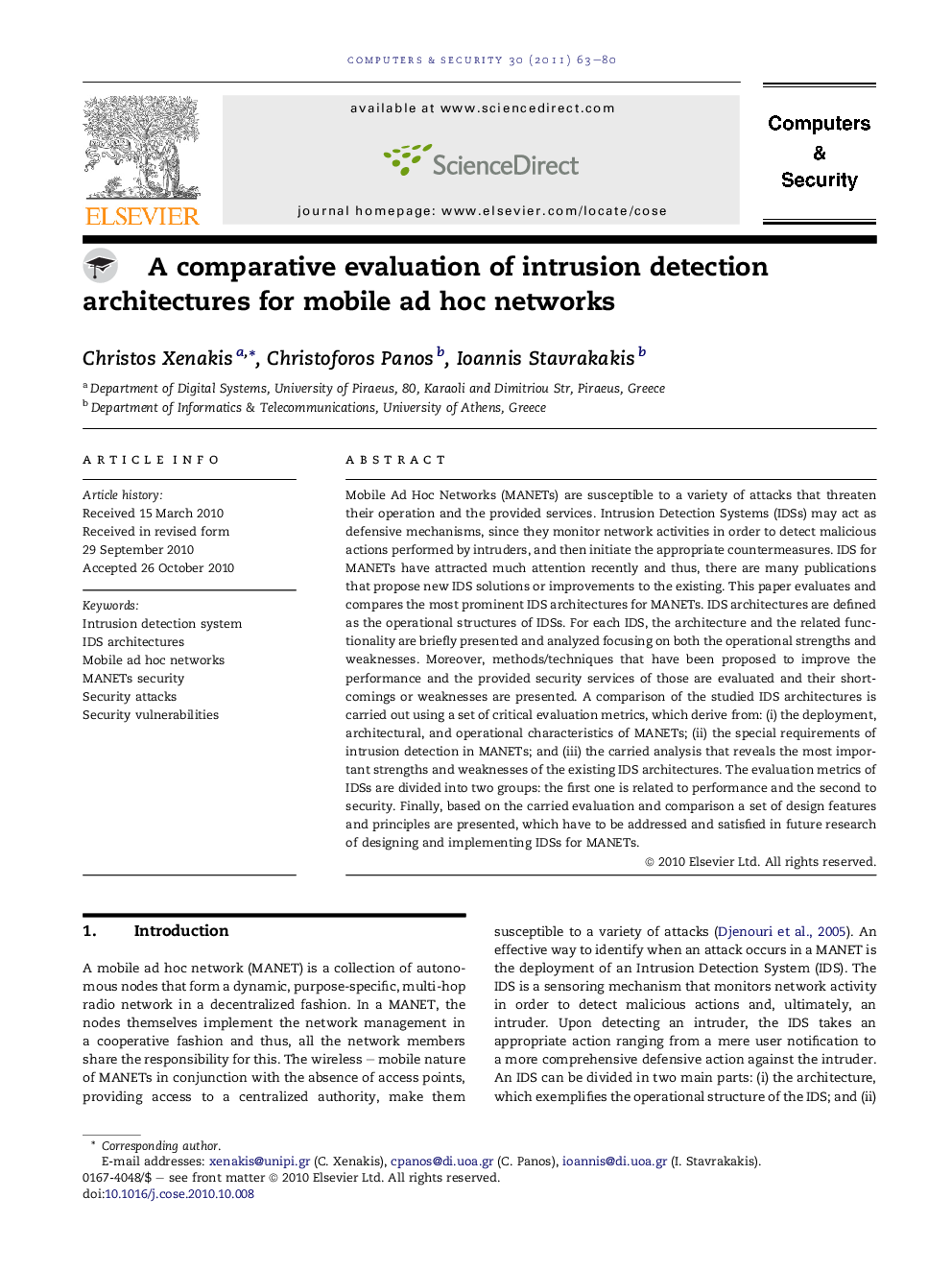| Article ID | Journal | Published Year | Pages | File Type |
|---|---|---|---|---|
| 456560 | Computers & Security | 2011 | 18 Pages |
Mobile Ad Hoc Networks (MANETs) are susceptible to a variety of attacks that threaten their operation and the provided services. Intrusion Detection Systems (IDSs) may act as defensive mechanisms, since they monitor network activities in order to detect malicious actions performed by intruders, and then initiate the appropriate countermeasures. IDS for MANETs have attracted much attention recently and thus, there are many publications that propose new IDS solutions or improvements to the existing. This paper evaluates and compares the most prominent IDS architectures for MANETs. IDS architectures are defined as the operational structures of IDSs. For each IDS, the architecture and the related functionality are briefly presented and analyzed focusing on both the operational strengths and weaknesses. Moreover, methods/techniques that have been proposed to improve the performance and the provided security services of those are evaluated and their shortcomings or weaknesses are presented. A comparison of the studied IDS architectures is carried out using a set of critical evaluation metrics, which derive from: (i) the deployment, architectural, and operational characteristics of MANETs; (ii) the special requirements of intrusion detection in MANETs; and (iii) the carried analysis that reveals the most important strengths and weaknesses of the existing IDS architectures. The evaluation metrics of IDSs are divided into two groups: the first one is related to performance and the second to security. Finally, based on the carried evaluation and comparison a set of design features and principles are presented, which have to be addressed and satisfied in future research of designing and implementing IDSs for MANETs.
